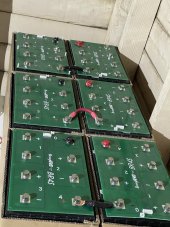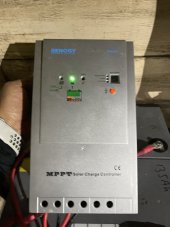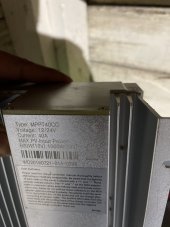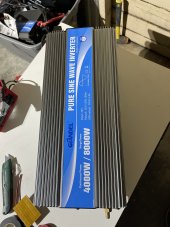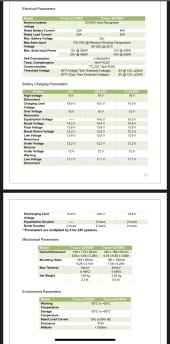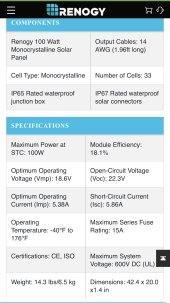ki0x18
New Member
Please bear with me since I’m relative new to solar
Soo I’m trying to run my garage/shop from solar.
The equipment that I have is:
12-100 Watt Renogy Solar panels
6- 12 volts 150Ah Lifepo4 from battery Evo
4000 watt gliden inverter
40 amp Renogy Mppt tracer (old model)
Plenty of wire from 22ga to 0/2
My ideas is to Build a 24v system with:
(3) 8S2P battery configuration for 24v with a 150ah bms from killers solar (3)
Im try to run mostly my lights (led)
and outlets for few 120v tools like:
-DEWALT table saw 15 amp 1200 watts
-shop vac 10am 1200 watts
-Heat gun 1200 watts 10amps
- bartery chargers (most of my tools are battery operated)
-usb chargers
- maybe a 1500 watt space heater
-led lights 60watts and ring cameras
- mini fridge (about 50-100 watts)
-chest freezer (60-150 watts)
My questions are:
What would be the best layout for my 12 panels for 24v array (ground mounted for easy access/maintenance)
What size wire/fuses should I use for the battery bank?
6-12v 150ah (2000watt hours) each
2 in serís for 24v, 3 in parallel for 450Ah
What size wire for my panel?
Should i use a combiner box?
Panels would be no more than 25 ft from garage/shop
I though about going with a 48v all in one system but alrededor had most of the parts order so that could be an upgrade later on if I nee more
Power
Any help/advice would be really appreciate? Thanks?
Soo I’m trying to run my garage/shop from solar.
The equipment that I have is:
12-100 Watt Renogy Solar panels
6- 12 volts 150Ah Lifepo4 from battery Evo
4000 watt gliden inverter
40 amp Renogy Mppt tracer (old model)
Plenty of wire from 22ga to 0/2
My ideas is to Build a 24v system with:
(3) 8S2P battery configuration for 24v with a 150ah bms from killers solar (3)
Im try to run mostly my lights (led)
and outlets for few 120v tools like:
-DEWALT table saw 15 amp 1200 watts
-shop vac 10am 1200 watts
-Heat gun 1200 watts 10amps
- bartery chargers (most of my tools are battery operated)
-usb chargers
- maybe a 1500 watt space heater
-led lights 60watts and ring cameras
- mini fridge (about 50-100 watts)
-chest freezer (60-150 watts)
My questions are:
What would be the best layout for my 12 panels for 24v array (ground mounted for easy access/maintenance)
What size wire/fuses should I use for the battery bank?
6-12v 150ah (2000watt hours) each
2 in serís for 24v, 3 in parallel for 450Ah
What size wire for my panel?
Should i use a combiner box?
Panels would be no more than 25 ft from garage/shop
I though about going with a 48v all in one system but alrededor had most of the parts order so that could be an upgrade later on if I nee more
Power
Any help/advice would be really appreciate? Thanks?



